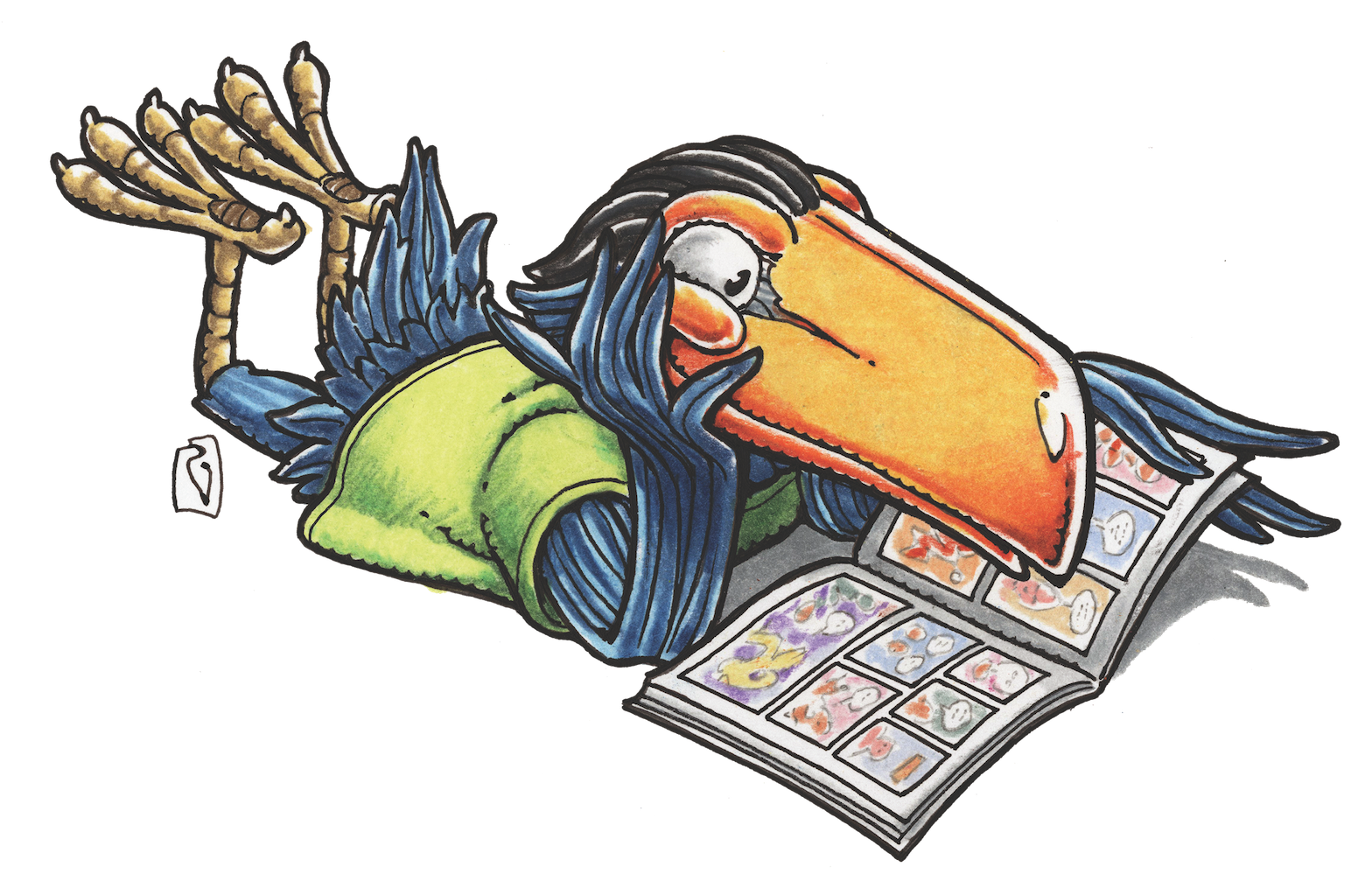STEVE LIEBER’S DILETTANTE
Dilettante 042: Expanding Your Influences


Over the course of a career in comics, you’re going to tell a lot of stories. Along the way, you’ll churn through many ideas, and watch them descend from exciting, to welcome, to expected, to tedious. That clever new twist that earned so much praise is now part of the everyday toolkit for a dozen other cartoonists. Your stunning risk is now a standard riff.
No one likes to acknowledge this. What’s the point of laurels if you can’t rest on them? Too bad. You need to keep learning. And here’s a valuable tip: you’re going to want to learn from places outside of comics. There are enormous bodies of work to explore in other media, with valuable lessons you can apply to the stories you want to tell. Every work in every medium has its own beauty and spirit to share. But for the purposes of this essay, I’ll be talking about coming to other works with a utilitarian eye and asking, “What can I learn from this work to improve my own?”
Photography
Just about every cartoonist spends time looking at photographs for pure research purposes. “What do a giraffe’s spots look like?” “How do the sleeves on a Victorian-era dress gather at the shoulder?” But photography is a vast and expressive visual medium. Study a photographer’s work to see the world through another set of eyes. Great photographers catch decisive moments. They isolate geometric order in the midst of the world’s organic chaos. They create mystery by juxtaposing unlikely elements. They highlight sly ironies. They use pictures to talk about the world, just like illustrators and cartoonists, and many of the strategies that work for them will work for you.
Photography also often has unplanned elements that lead to surprising and unexpected compositions that are extremely useful for cartoonists to consider.
Dance
If you work with the human figure, you’re going to get a lot out of watching dance performances. This is particularly true of artists working in adventure comics for whom the athleticism of dancers is extremely valuable, but any visual storyteller can learn from them. Dancers spend years sculpting themselves into precision machines, and their choreographers bring a lifetime of experience to the job of setting them in motion. Watch dancers for ideas about balance and movement. Look for the lines they create with their bodies, how they arrange themselves into abstract shapes, and how those shapes can express such a wide range of human emotions and attitudes.
When dance performances are built around a narrative, you can study how they combine elements to shape a story. You don’t have music, of course. But you do get to arrange the figure in space, and juxtapose it with other figures. You have light, and color, and costume, and you can change these over the time the story progresses. You have rising and falling action, and moods that can change gradually or abruptly.
And when a dance abandons narrative to emphasize abstract beauty and movement, study it the way you would another artist’s sketchbook. Look for daring or unexpected arrangements of shapes and colors, mine it for ideas for poses and gestures and movement. Everything you see on that stage is the choice of skilled and thoughtful artisans. Their ideas might mesh well with yours.
Prose Fiction
Most of the stories that get told in our culture are told with words, not pictures. Look to novelists and short story writers for, well, everything. Images. Language. Pacing. Story structure. Symbolism. Insight into human behavior. Ideas about how the world works, who we are and what we’re doing. Prose fiction’s value to a storyteller in any medium is so vast I almost feel foolish mentioning it at all. If you want to tell stories, read stories.
Theater
Stage plays offer many of the same immense possibilities as prose, and as visual media, they do a lot of things that are useful for a comics-maker to study. A stage play is constrained by the limitations of the space it’s performed in, and requires a high degree of stylization. Look to theatre for the power of minimalism. See how a lamppost can stand in for an entire city street, how a desk and a window can become an office, how a few shadows on a wall can be an army marching to war. Pay attention to how costumes are used to help the audience keep characters separate and recognizable, how the clothes show who characters are, and how they’re changing. Watch how theatrical designers use light, and how a simple change of color or intensity can vastly change the mood of a scene. The same sort of change of light can make it immediately clear that the time and place has changed, even if nothing else on the stage has.
And pay close attention to how few unnecessary moments there are. A good play is full of lessons in economical storytelling. It’ll bring you into a scene as late as possible, and get you out as early.
Painting and Sculpture
Fine artists speak a number of visual languages, some going back thousands of years. A visit to even a small museum will surround you with more visual possibilities than you can incorporate into an entire career. You’ll find work that uses the conventions of western art which form the foundation of most academic or “realistic”) drawing styles. What do I mean by that? Linear and atmospheric perspective used to create the illusion of depth. Figures based on the study of human anatomy. The effects of light and color observed in nature and faithfully recorded. Compositions based on rules of design. Symbolic schemes that artists have relied on for generations to extend meaning beyond the literal.
You’ll also find works from other cultures around the world, each of which has created their own harmonies and tensions and dissonances. Learn from them—find ideas and strategies that you can incorporate into your own creations. Just take care not to appropriate undigested elements and claim them as your own. It’s one thing to look at a Benin Bronze head and be inspired to juxtapose big organic facial forms with areas of elaborate patterning. It’s another to just copy a specific work, stick a few cylinders underneath it and say you designed a robot.
Where do you look for inspiration? Get in touch and let me know. You can reach me on Twitter or Facebook. And be sure to pick up The Fix #6 this week at your local comic shop!
Steve Lieber’s Dilettante appears the second Tuesday of each month here on Toucan!